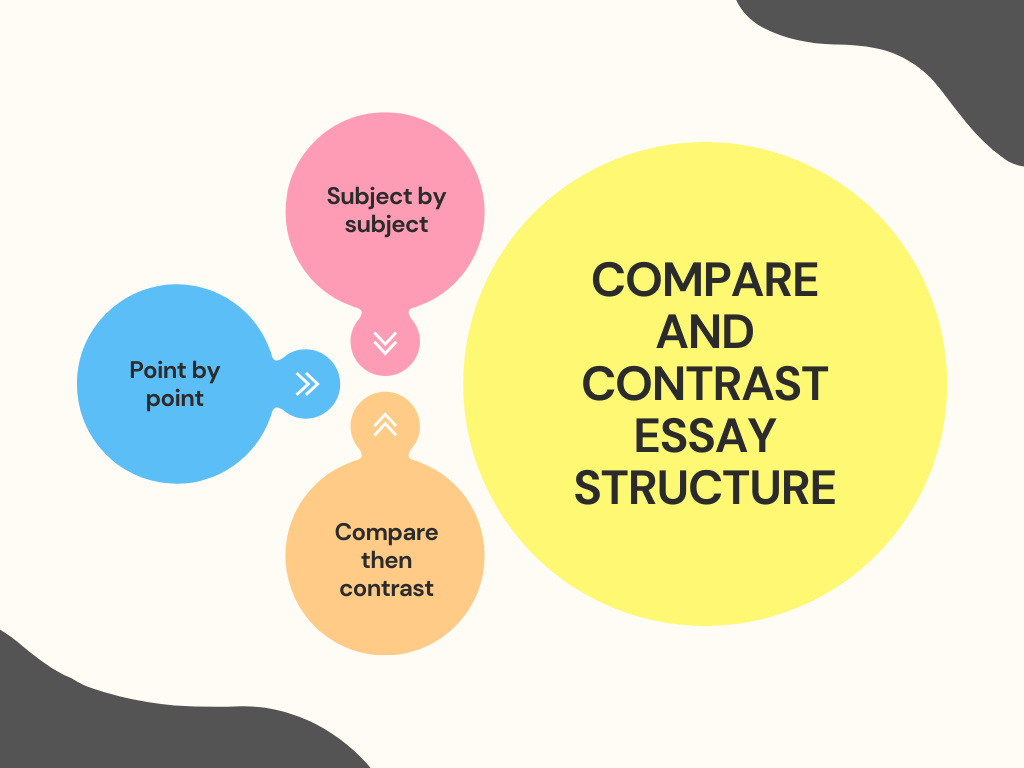One of the common academic assignments is a compare and contrast essay where you need to examine two or more things and relate them to one another. Relating here means finding common and uncommon things between subjects. In general, these things belong to the same group, which makes their analysis more relevant and complex. There may be two or more models of cars, two poems, three men, three universities, etc.
What makes a great compare and contrast essay outline
A well-composed compare and contrast essay is an ordinary assignment among students. Writing a thorough analysis impacts the development of correlative skills in sync with examining the subject closely. Choosing to write a compare and contrast essay, students need to face such tasks as:
- Study the unknown subjects and avoid misunderstandings;
- Show how one thing is connected or not connected to another;
- Explain why this thing is superior;
- Support your opinion with facts from reliable resources.
The key goal of the compare and contrast essay outline is to investigate the topic from different sides, look for reliable sources with information, and citations and build a mini-plan. This is like the foundation that maintains the form of the paper from breaking down. The better this plan is, the more successful your essay will be. So, logical order and structure is a quite reasonable investment in your future A+ grade.
How to arrange your compare and contrast essay outline properly
A compare and contrast essay structure has all three basic and well-known parts. However, before you start, identify two or three subjects you will base your paper upon. Choosing them, remember that these things cannot be totally different as there should be something in common for a proper comparison. Too many similar things will be no good either.
Obviously, it would be better to choose the things you like if, of course, you have a choice. What college students usually like are two movies, two singers, two political leaders, two universities, couples, languages, countries, etc. The simplest compare and contrast topics are animals, movies versus books, and surprising facts. It actually does not matter what exactly you choose, as long as the topics are interesting and have common and totally different features to correlate.
Now when you are done with a theme, it's time to consider the compare and contrast essay overall architecture. As was mentioned earlier, the essay should consist of all three elements but markedly, a compare and contrast essay outline has body paragraphs specifically organized related to others (this can also become a topic for correlation, by the way). There are two key methods that make an original compare and contrast essay format describing this difference:
Number One: Block method
Create blocks, all the info about the subject is presented by specific topics. You discuss one of them, its features, and special details, then the next one, and so on. To imagine it, look at this compare and contrast template for a block method based on motorbikes and bicycles:
- Thesis: motorbikes and bicycles are used for faster transportation, but choosing one of them is based on people's budget, size of the city, and overall lifestyle;
- Paragraph one:
- Topic sentence: bicycles are less expensive than motorbikes
- Aspect one: lifestyle + arguments;
- Aspect two: budget + arguments;
- Aspect three: city + arguments.
- Topic sentence: motorbikes are faster to travel
- Aspect one: lifestyle + arguments;
- Aspect two: budget + arguments;
- Aspect three: city + arguments.
Number two: Point-by-point method
This kind of structure describes every common and different thing together, correlating both subjects simultaneously. Thus, you can write one characteristic and correlate it with other subjects. To imagine it, look at a compare and contrast template for this method:
- Thesis: bicycles and motorbikes are a good way of transportation, but preferring one of them over another is influenced by the budget, size of the city and overall lifestyle;
- Paragraph one: lifestyle
- Topic sentence: bicycles impact health less than motorbikes
- Topic one: bicycles + arguments;
- Topic two: motorbikes + arguments.
- Topic sentence: motorbikes cost more than bicycles
- Topic one: bicycles + arguments;
- Topic two: motorbikes + arguments.
- Topic sentence: bicycles are a better option as they allow to avoid traffic jams
- Topic one: bicycles + arguments;
- Topic two: motorbikes + arguments.
You can refer to these schemes as a compare and contrast culture essay outline worksheet. Definitely, both examples of a compare and contrast template have their advantages and flaws: the block method is easier as it points out all the information and actually leaves the reader to do the correlation thing. The point-by-point method makes you analyze everything yourself at the same time making all common and uncommon things more explicit and thus easier for the reader to follow.
Although your main focus should lie on these two methods, creating a compare and contrast essay outline, bear in mind the importance of a catchy intro and a clear conclusion. As you create the outline, there is no need to write the whole compare contrast essay introduction from scratch. Instead, narrow it down to a simple but useful compare and contrast template:
- Define the topic. For instance, it may look like «B and C correlation», or something kind of «Contrasting B to C», etc.;
- Describe the purpose. Explain why you picked exactly these two objects;
- Emphasize the significance. To strengthen your compare contrast essay introduction, clarify why the common things and all the differences between these objects are important to analyze. What actual value do they bring?
- Create a thesis. You cannot just state that two things are different or vice versa: you have to provide an example based on a strong thesis that explains everything. Support it with exact features that make them similar or not similar;
- Open a sentence with a hook to catch the reader.
Overall, your compare and contrast essay may have 5 paragraphs: intro, three body pieces (any method) and, of course, a conclusion. After the long process of organizing and structuring your thoughts, you need to bring together the main points and draw a bottom line. Be clear and short and avoid adding any new ideas in the final section.
Writing tricks for a comparative essay
To transform your mini-plan into a great compare and contrast essay, you may apply these little tricks:
- Provide smooth transitions between your ideas with signal words used namely for writing a comparative essay. These are the words to describe similarities: similarly, both, like, as well as, in the same way, etc. Meanwhile, these words describe differences:, while, unlike, on the other hand, conversely, etc;
- Proofread and edit your compare and contrast essay after it's done. Grammar mistakes and punctuation flaws are something that you cannot avoid so don`t ruin the whole impression with typos. Ask someone to read it for you to be sure you corrected all of them;
- Talk with your audience in a friendly and professional way;
- Keep the ideas right to the point;
- Unless the topic is assigned, choose the one that can be argued. The more value you can deliver, the better;
- Properly cite all sources;
- Always make new concepts clear for the reader when you introduce them in your paper.
Why compare and contrast outline matters
A comparative essay is a review of the similar and different features between ideas or subjects. That is not just a basic correlation: it requires evaluation and that is why it becomes so difficult to write. There are many reasons why a great outline can be crucial to the overall writing process:
- It proves that you are a professional writer;
- It ensures you did not forget to mention any important points;
- It saves you time by arranging your thoughts properly and helps to structure your ideas systematically;
- It acts as a bridge to a high grade.
Knowing what you are going to write is a halfway to success so don’t waste this chance and your time.
